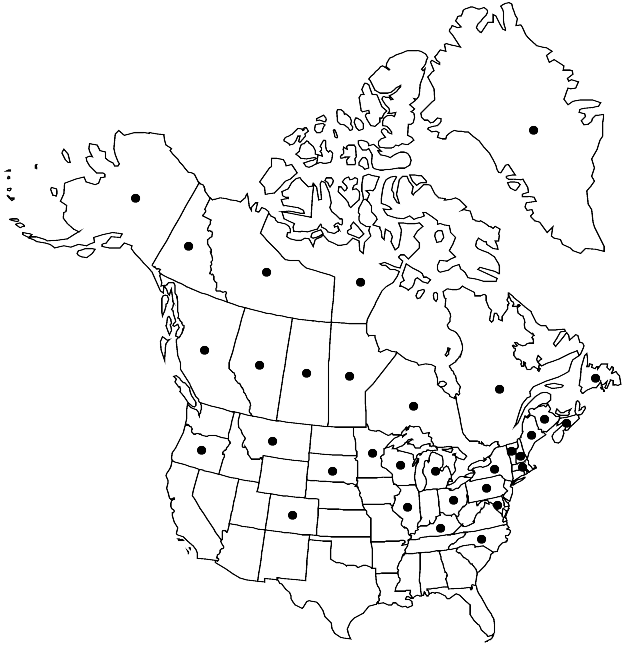Hypnum pratense
London J. Bot. 4: 177. 1845.
Plants medium-sized, pale green to golden green. Stems 0.5–1.5 (–3) cm, green to yellowish, erect to creeping, strongly complanate-foliate, irregularly branched to unbranched, branches 0.1–0.3 cm; hyalodermis present, central strand present; pseudoparaphyllia foliose. Leaves sometimes falcate, not strongly secund, ovate, curving to insertion, tapering to apex, 0.5–1.8 × 0.3–0.5 mm; base decurrent; margins plane, entire; apex broadly acute; costa double and short or ecostate; alar region not conspicuously differentiated; basal laminal cells shorter, wider than medial cells, yellowish, walls porose; medial cells 80–100 × 4–5 µm. Sexual condition dioicous; inner perichaetial leaves oblong-lanceolate, plicate, margins slightly toothed or entire at apex, costa obscure. Seta reddish, 2–4 cm. Capsule inclined to arcuate, pale-brown, short-cylindric, 1–2 mm; annulus 2-seriate or 3-seriate; operculum conic; endostome cilia 2–4.
Phenology: Capsules mature Jul–Aug.
Habitat: Terrestrial, moist soil in fens, calcareous sites
Elevation: low to high elevations (0-3000 m)
Distribution

Greenland, Alta., B.C., Man., N.B., Nfld. and Labr. (Nfld.), N.W.T., N.S., Nunavut, Ont., Que., Sask., Yukon, Alaska, Colo., Ill., Ky., Maine, Md., Mass., Mich., Minn., Mont., N.H., N.Y., N.C., Ohio, Oreg., Pa., S.Dak., Vt., Wis., Europe, Asia
Discussion
Hypnum pratense is a temperate to boreal circumpolar species, scattered largely north of the 35 parallel of latitude, but not frequent in the Arctic; plants produce sporophytes infrequently in spring and summer. Plants of H. pratense are strongly glossy with few or no rhizoids, the apical laminal cells are considerably shorter than the medial cells, and the capsules are furrowed when mature and dry. For additional comments, see discussion under 14. H. lindbergii.
Selected References
None.